In the quest for a good night’s sleep, an increasing number of couples are choosing to part ways – at least in the bedroom. Dubbed ‘sleep divorce,’ this trend sees partners opting for separate sleeping spaces to combat incompatible nocturnal habits. A recent survey by One Poll on behalf of Avocado Green Mattress highlights this interesting phenomenon. This article will use data from this survey and other sources to explore the top 12 reasons for sleep divorce in the US.
Snoring
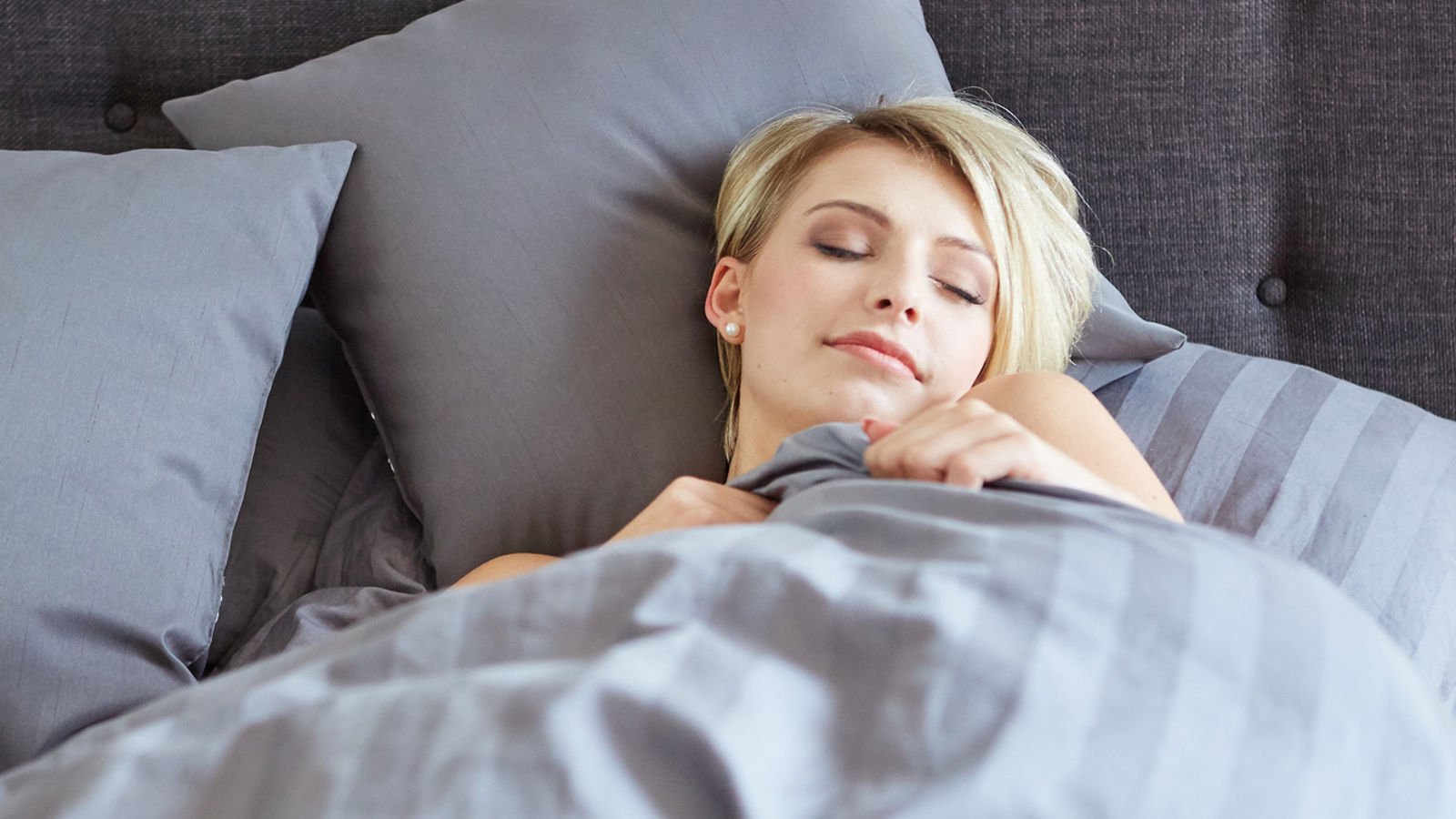
Snoring stands out as a leading cause of sleep disruption among couples, with 52% of survey respondents acknowledging its impact on their rest. This common condition is characterized by the vibration of relaxed throat tissues during sleep, leading to the familiar and often disruptive sound. Though sporadic snoring is usually harmless, persistent snoring may indicate underlying health conditions such as obstructive sleep apnea (OSA). This disorder can greatly affect sleep quality and overall well-being.
Phone Scrolling

The habit of scrolling through the phone before bed is a significant sleep disruptor, with 33% of survey respondents finding it bothersome. This behavior can interfere with sleep by suppressing melatonin, the hormone that controls the cycle of sleep and wakefulness. The blue light emitted from phone screens mimics daylight, reducing the time spent in restorative sleep stages such as slow-wave and REM sleep.
Using the Bathroom at Night

Nocturnal bathroom visits, commonly known as nocturia, are a significant sleep disruptor, affecting 33% of partners, according to the survey. This condition involves waking up at night to use the bathroom, which can fragment sleep and make it difficult to return to slumber. While occasional trips may not be concerning, frequent nocturia can lead to sleep deprivation and mood changes and even pose a risk of falls during nighttime visits.
Hogging the Covers

Cover hogging, where one partner dominates the shared bedding, is a notable sleep disturbance, cited by 27% of survey participants as a source of nightly frustration. This behavior often leads to one person being left without adequate coverage, resulting in disrupted sleep due to discomfort from cold. Interestingly, research suggests that cover hogs benefit from their blanket monopoly, potentially gaining a few extra minutes of sleep.
Tossing and Turning
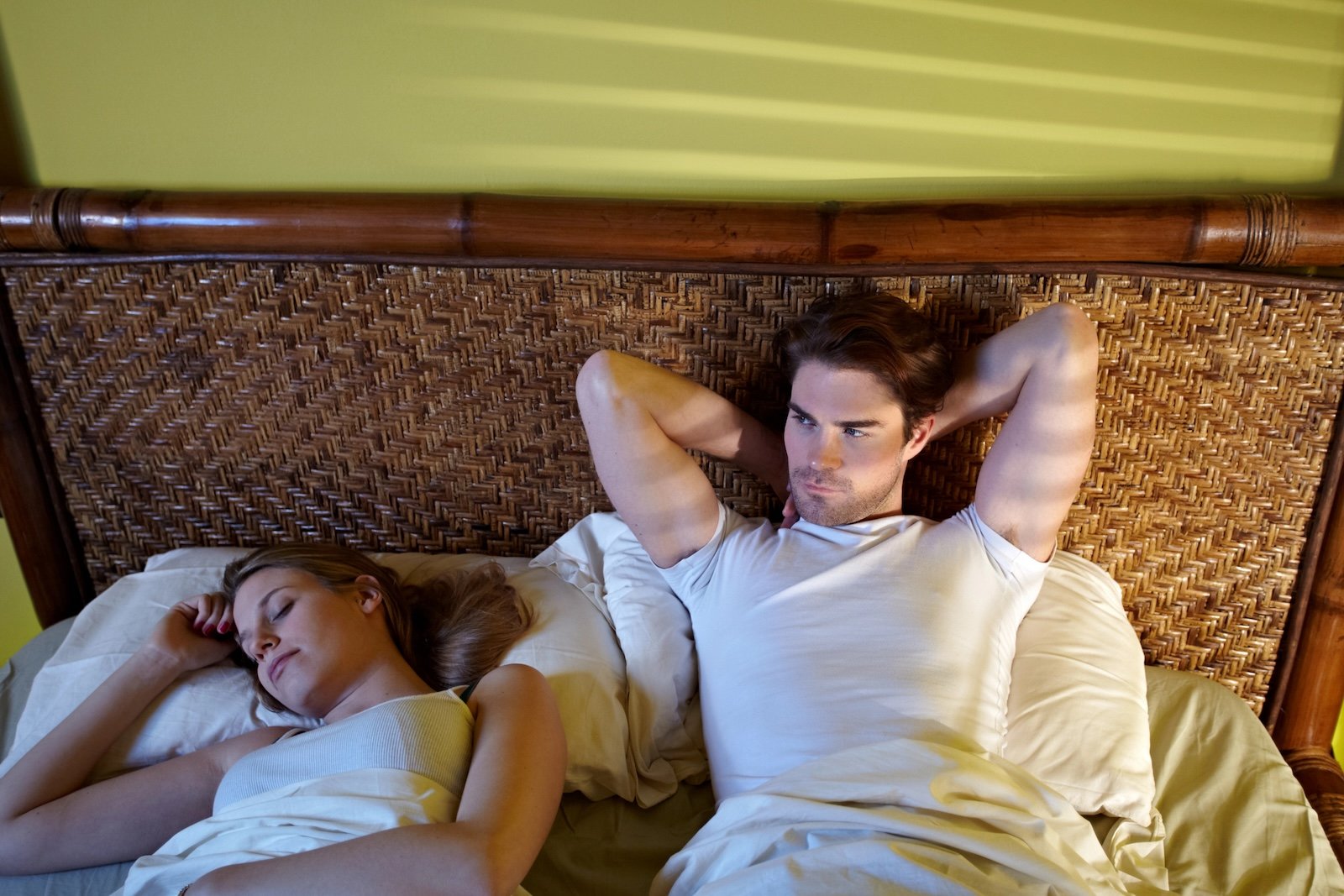
Tossing and turning is a common sleep disturbance that affects a quarter of partners. This restlessness can significantly degrade sleep quality, leading to fatigue and reduced well-being. The causes are varied, including stress, anxiety, poor sleep hygiene, dietary imbalances, and even underlying medical conditions. Addressing these factors is crucial for both individuals’ sleep health and the overall quality of the relationship.
Starfishes Across the Bed

The ‘starfish’ position, where a sleeper sprawls across the bed with arms and legs outstretched, is a common cause of sleep disruption, disturbing 21% of partners. While some find this position comfortable for back and neck pain relief, it can lead to snoring and sleep apnea due to the tongue and soft tissues falling back into the throat. Additionally, the starfish position can limit the sleeping space for the other partner, potentially leading to discomfort and interrupted sleep.
Different Thermostat Preferences

Differing thermostat preferences between partners can significantly impact sleep quality. The ideal bedroom temperature for peaceful sleep is between 15 and 19 degrees Celsius (60 and 67 degrees Fahrenheit). Deviations from this range can cause restlessness and disrupt sleep cycles, leading to grogginess and a lack of restorative rest. Couples may find that reaching a compromise on thermostat settings is crucial for comfort and sleep quality.
Sleep Talking

Sleep talking, or somniloquy is a common sleep behavior that can be a source of nighttime disturbance for partners. While often harmless and unintentional, the vocalizations during sleep can range from mumbling to coherent conversations, potentially waking the other person. Although the exact causes of sleep talking are not fully understood, it may be associated with stress, mental health conditions, or other sleep disorders.
Restless Leg syndrome
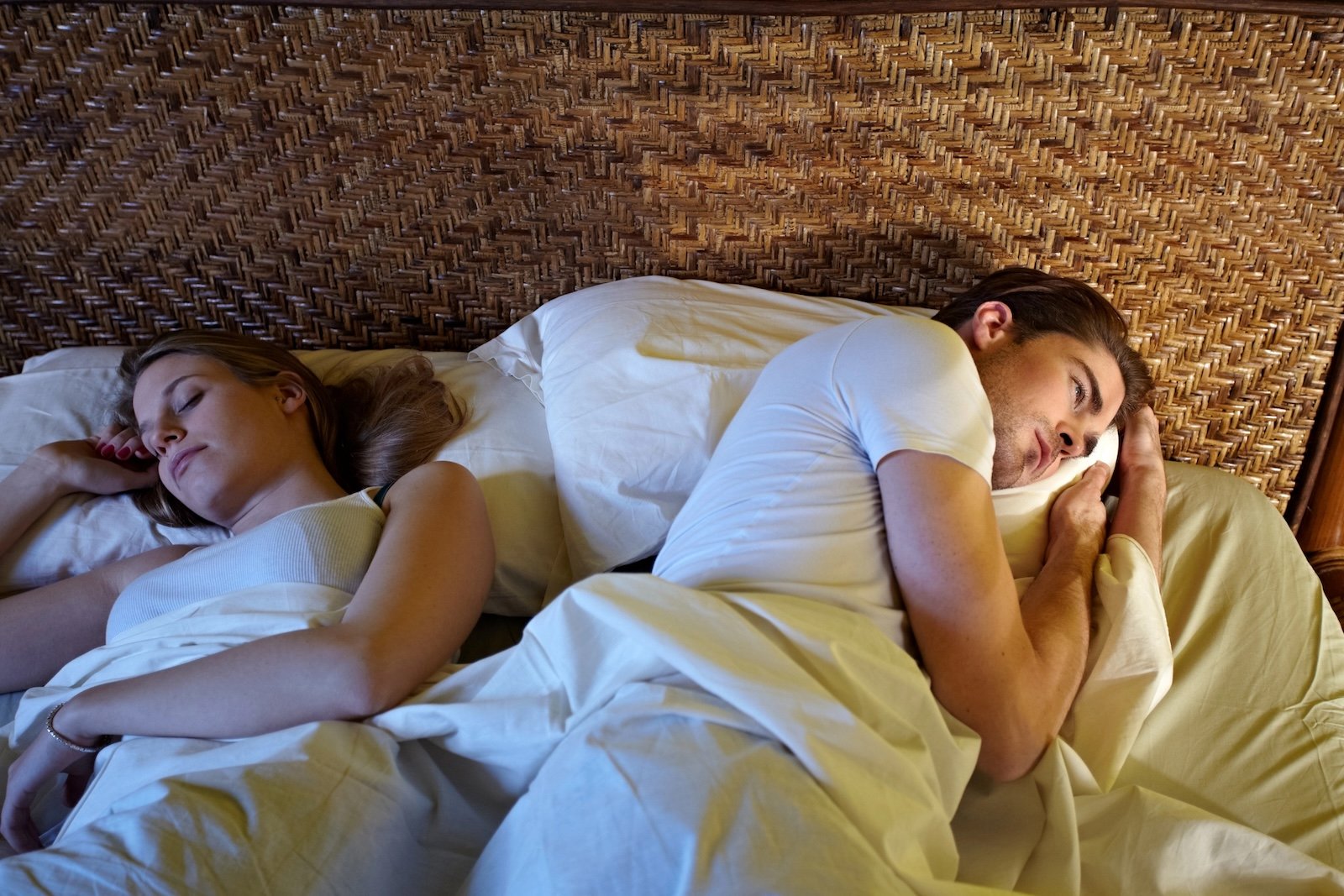
Restless Leg Syndrome (RLS) is a neurological condition characterized by an irresistible compulsion to move the legs, frequently associated with distressing feelings such as tingling, itching, or a sensation of crawling. These symptoms typically worsen during periods of inactivity, mainly when lying down, making it challenging to fall asleep or stay asleep. RLS can severely disrupt sleep, leading to fatigue and daytime sleepiness. It affects 5 to 10% of adults and is more common in women.
Late Night Eating
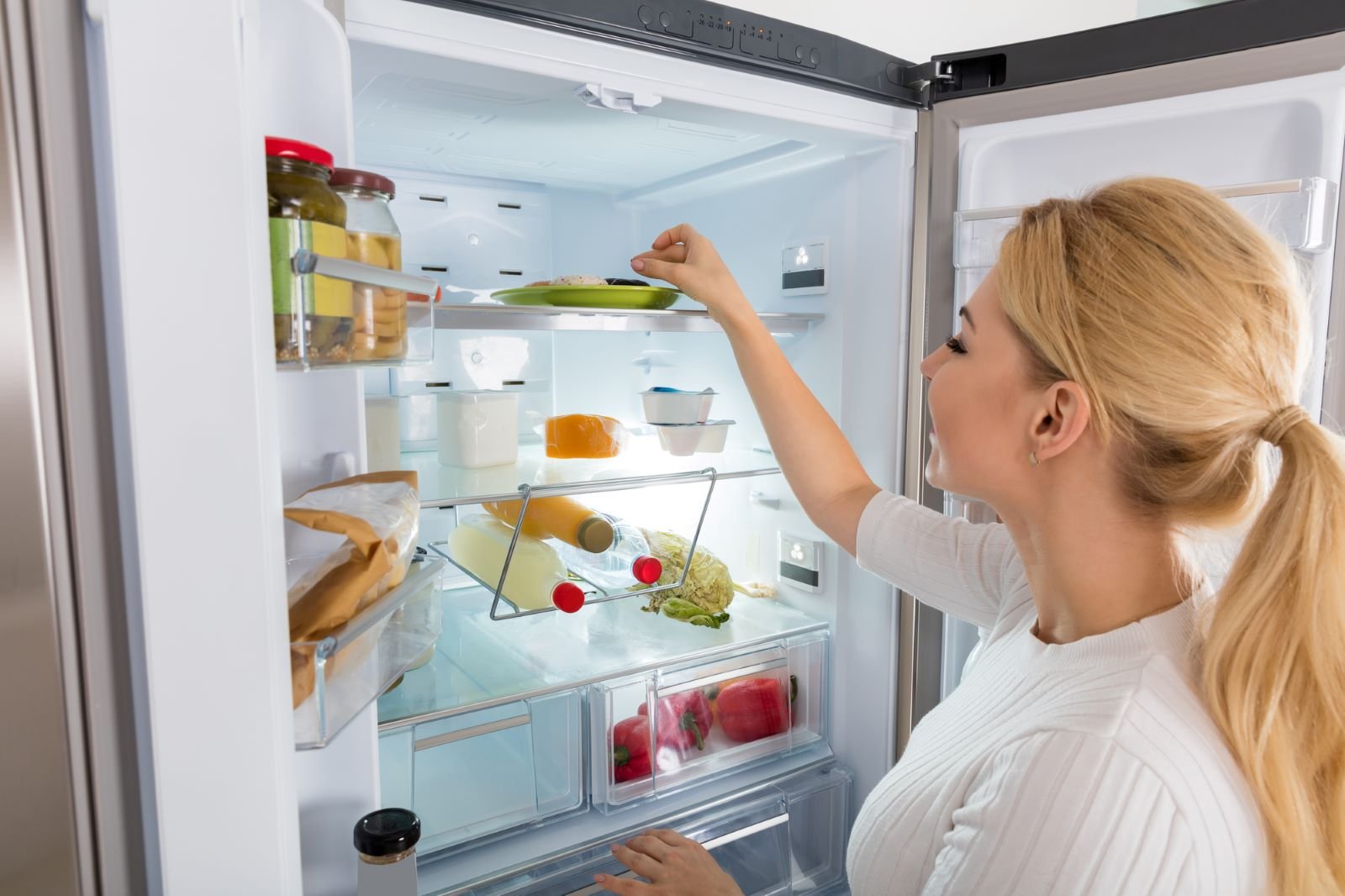
Indulging in late-night meals can lead to more than just indigestion; it can also disrupt the delicate balance of sleep. Eating late at night can lead to discomfort and prolong the time to fall asleep. It can also affect sleep quality by altering the natural circadian rhythm and impacting the body’s ability to enter deep sleep stages. This affects the individual’s rest and can also disturb their partner’s sleep, leading to a cycle of fatigue and sleep deprivation.
Light and Noise Sensitivity
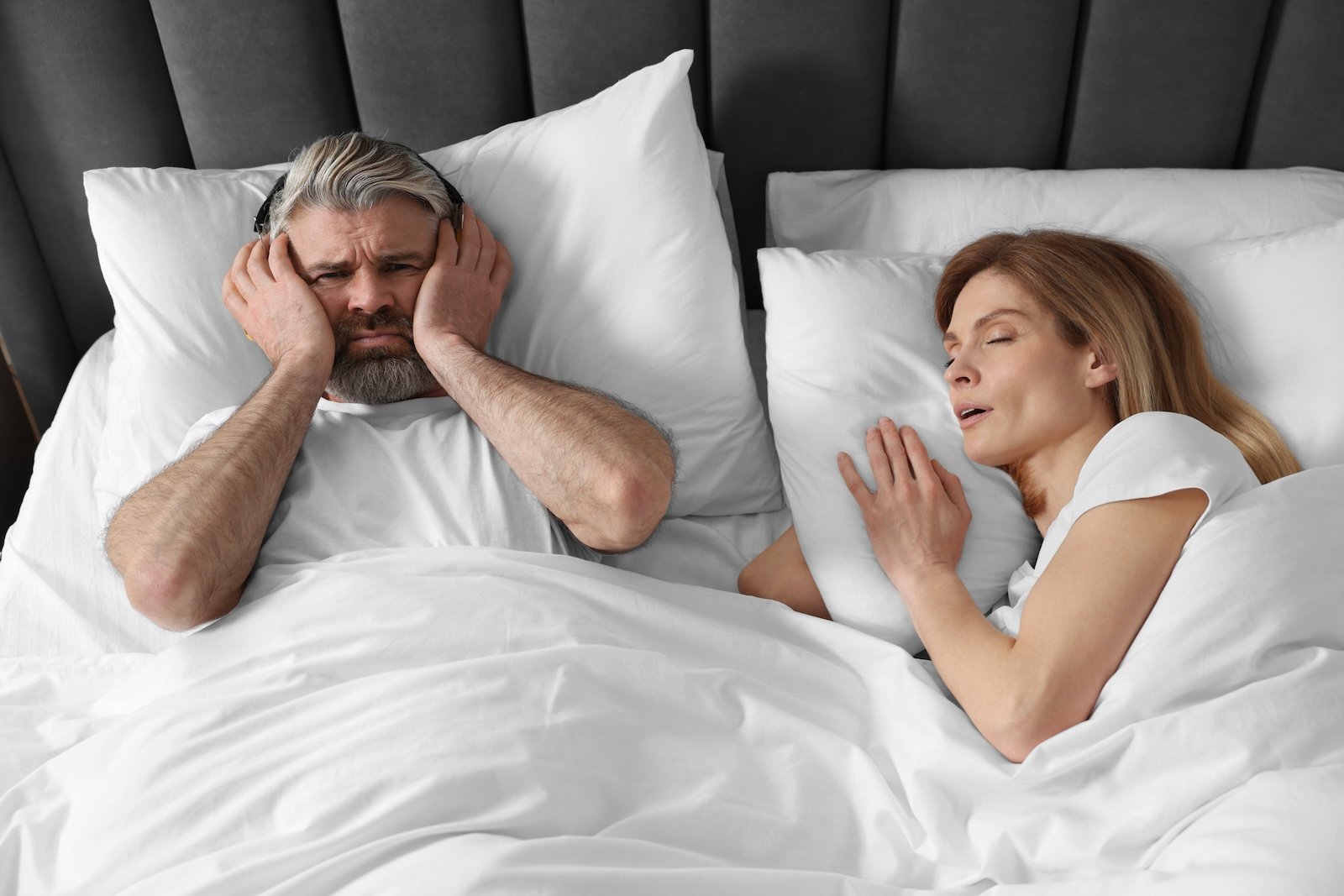
Sensitivity to light and noise can significantly affect sleep quality. Light influences the body’s circadian rhythm and melatonin production, which are essential for regulating sleep-wake cycles. Exposure to light at night can disrupt these processes, leading to difficulties in falling asleep and maintaining deep sleep. Similarly, noise can interrupt sleep by causing awakenings or altering the time spent in different sleep stages, such as REM and deep sleep. These disturbances can lead to sleep fragmentation, resulting in daytime sleepiness and irritability. For partners sharing a bedroom, one’s sensitivity to light or noise can mean sleepless nights for both.
Allergies
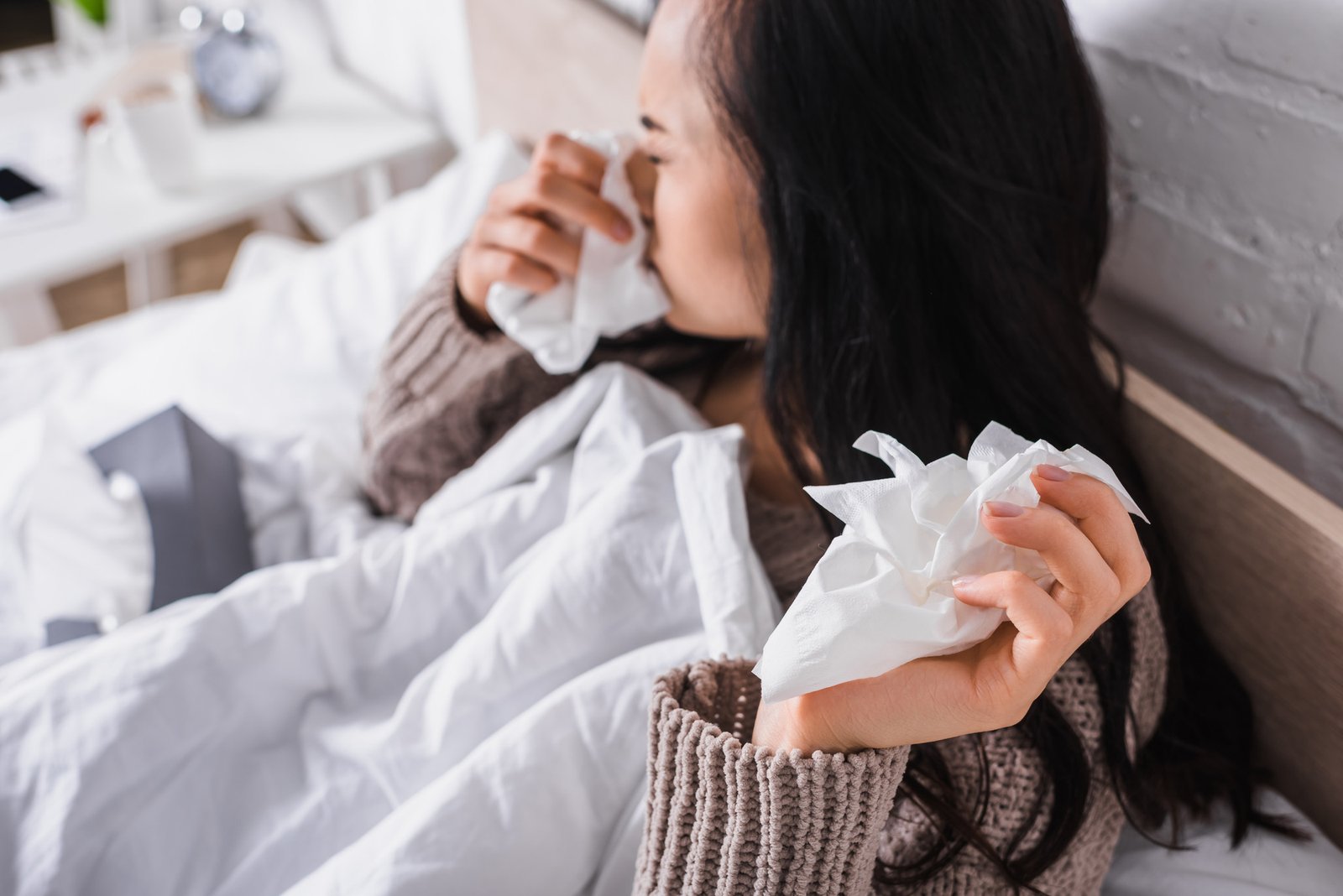
Allergies and asthma are common conditions that can significantly disrupt sleep for both the sufferer and their partner. Symptoms like coughing, wheezing, and difficulty breathing can lead to frequent awakenings and decreased sleep quality. Allergic reactions often worsen at night due to prolonged exposure to allergens like dust mites or pet dander found in the bedroom. Asthma symptoms may also intensify during sleep, further exacerbating sleep disturbances.


